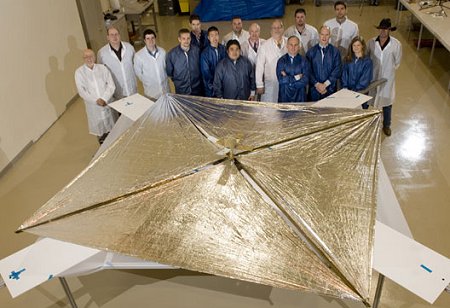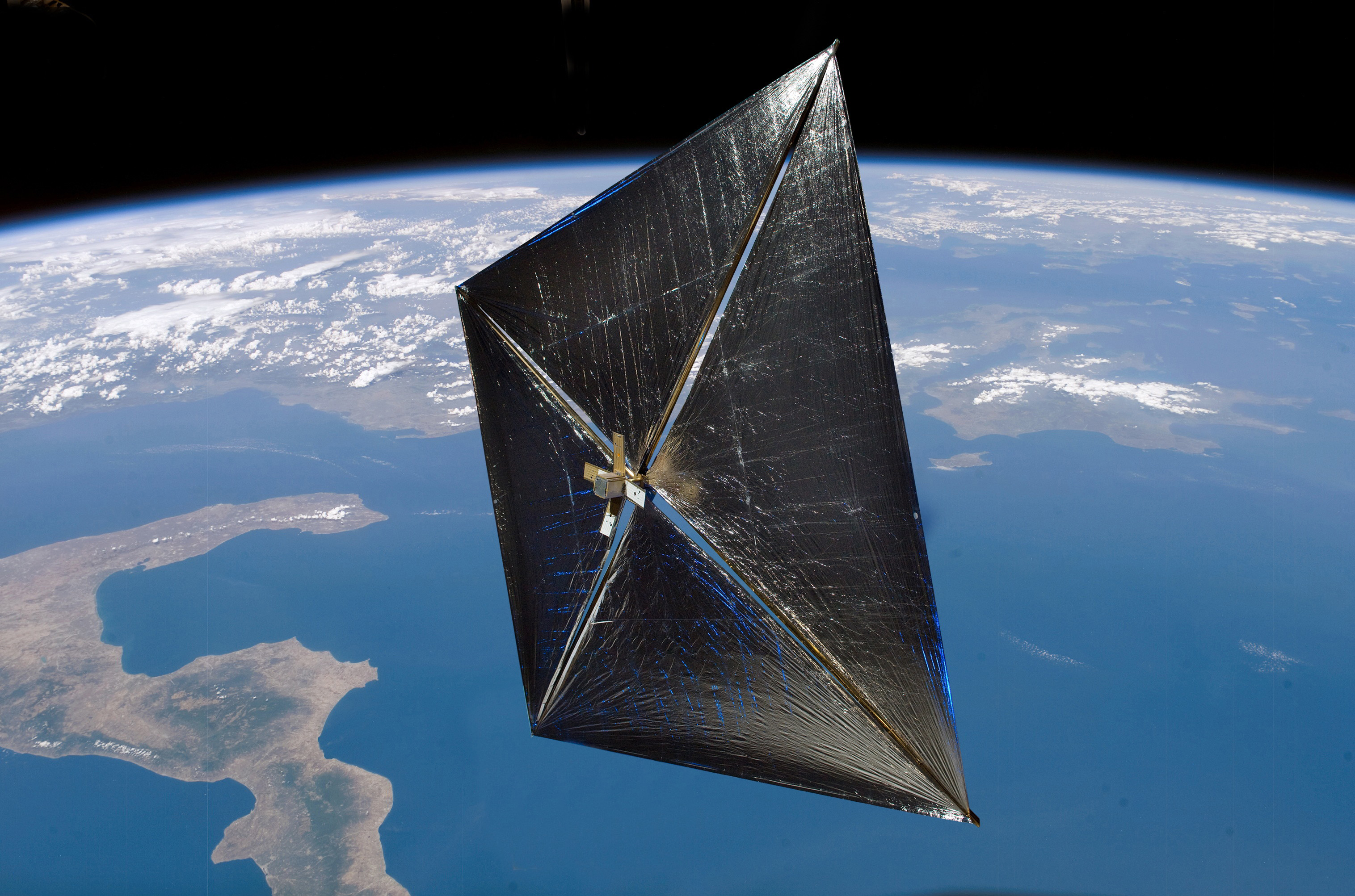[/caption]
The night sky has many wonderful objects to look at on a clear evening, including many man-made satellites, and the always impressive International Space Station (ISS). Now there’s a new addition to these artificial delights: the first ever solar sail to orbit the Earth, NASA’s Nanaosail-D Satellite. Want to know how you can see it?
The 10m x 10m reflective sail is designed to act like a brake and gradually create drag in the upper atmosphere, slowly pulling a satellite down and de-orbiting it at the end of its working life. Nanosail-D is testing the potential of this technology to reduce space junk and debris.

The satellite has a huge reflective sail and could potentially be many times brighter than the planet Venus when it catches a glint from the Sun. Unlike the International Space Station (ISS) and other satellites, the sail will not be visible when it is directly above us as we will be looking at it edge on, It will be more visible when closer to the horizon.
The Nanosail-D satellite will be visible from now and for the next few months. To see it you will need to know exactly when it will be visible from your location. To do this, go to heavens-above.com or spaceweather.com where star charts with times and pass details will be displayed after you enter your observing site.
Once you know the time and location in the sky of the pass of the satellite, make sure you are able to get a good view of the horizon, or part of the sky where the satellite due to appear. Give yourself plenty of time, go outside and get ready. I always set a 30 second reminder on my watch or cell phone, so I don’t have to fumble around or guess the time.
Unlike the ISS and most other satellites, Nanosail-D passes may only last a few, or a few tens of seconds, so make sure you are looking in the right place at the right time. You will see an amazingly bright star-like object rise up, get brighter and then suddenly disappear. When it “disappears” it is still passing over, it’s just no longer at the right angle or is no longer being illuminated by the sun. NanoSail-D has few reflective surfaces compared to many on the ISS.
To enjoy the Nanosail-D passes:
• Make sure you know the right place in the sky and the time of the pass, by checking on the web.
• Make sure you will be able to get a clear view of it from your viewing location.
• Set an alarm or get ready for the pass as it only lasts a few seconds.
• NASA expects NanoSail-D to stay in orbit until April or May 2011.
• If you are an astrophotographer, don’t forget, NASA and SpaceWeather.com are having an imaging contest of NanoSail-D. Find out more here.
• Most of all, get your friends and family outside with you to watch Nanosail-D and enjoy!

